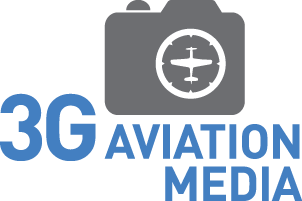How just a bit of time can change an image…
As photographers many times we have to shoot with the light that is available; however sometimes we do get the chance to spend some more time with our subjects than others. I like to take these opportunities to not just be happy with the shot I got but to spend the time to wait for the light to change, which often times dramatically impacts an image.
About a year ago I had the opportunity to spend a week out at MCAS Yuma and NAF El Centro during the Marine Corps' Weapons and Tactics Instructor (WTI) training thanks to Doug Glover. This was my first time shooting at these locations and some considerable planning had gone into what we were trying to capture in that week's time.
After arriving in Phoenix and driving the 3+ hours to Yuma, AZ (note to self, when shooting at MCAS Yuma and NAF El Centro…. Fly into San Diego and NOT Phoenix!!!) we settled in, grabbed some lunch and unpacked the gear. That afternoon we headed over to the main gate at MCAS Yuma to meet the PAO Marine who had all of our paperwork to shoot out on the South CALA (Combined Arms Loading Area) with some of the aircraft from MAG-31. By the time we had reached the ramp where we were to shoot it was just before 5pm, leaving us plenty of time to plan some shots before sunset. We needed to ensure camera position would not only place aircraft in the best position for the light (as we were not able to move the aircraft we could only move the photographers!) but also to isolate some of the F/A-18 Hornets from the other aircraft on the CALA that evening.
I had (2) cameras with me that afternoon, my Nikon D4 and a Nikon D800 with a Nikon 70-200mm f2.8, Nikon 24-70 f2.8 lens and a Really Right Stuff (RSS) Ground Pod, which makes getting the camera low to the ground very easy. Typically the D800 is my primary body that I use for static images due to its massive 36MP sensor allowing for some awesome 24x36 or larger prints (the painful part is the 45MB RAW files)!
We spent about 15-20 minutes scouting the ramp, making note of certain aircraft we definitely wanted to capture, such as the F/A-18 Hornet shown below, from the VMFA-533(AW) "Hawks". Using the iPhone app Sun Seeker, I was able to quickly figure out where the sun would be at the horizon for sunset and at what exact time. It was a very clear October day but there were a few clouds off in the distance and the deep blue skies would accent the blue paint scheme of the Hawks' aircraft so I lined up the first shot of the afternoon. At this point there was plenty of light allowing me to shoot handheld in Aperture priority, f9.0 ISO 100 and a -2/3rd exposure compensation creating a shutter speed of 1/500th sec.
To finish off the image in camera RAW I added a gradient neutral density filter to the sky, added some clarity and sharpening to the aircraft and clouds, opened the shadows slightly under the wing with an adjustment brush and dropped the blue slider in HSL Luminance tab in Lightroom 5.
We proceeded to shoot for the next hour or so working with different subjects that were out on the CALA but I returned to the Hawks' aircraft 5-10mins prior to actual sunset like I had planned. This time I placed the camera on the RSS Ground Pod and got as low to the ground as I could. Still in Aperture priority, set to f11.0 ISO 100 with a -2/3rd exposure compensation creating a shutter speed of 1/50th sec, I lined up the next image you see below.
Finishing off this image in camera RAW included nearly the same steps, I added a gradient neutral density filter to the sky, added some clarity and sharpening to the aircraft, opened the shadows slightly under the wing with an adjustment brush and increased the warmth slightly with the white balance sliders in Lightroom 5.
Both images are relatively the same camera angle (just a bit lower) and focal length but now instead of the deep blue skies the Hornet was bathed in a warm desert sunset. Most of the clouds had dispersed by then but a few lingered just under the nose of the Hornet. In just about an hour’s time I now had 2 very different images and really the only thing that changed was the light. Which image is better? That’s up the viewer. As for me, I felt while creating them that they both told very different stories.
The message here is if you might be surprised what little time it takes for the change in light to change your photography!
